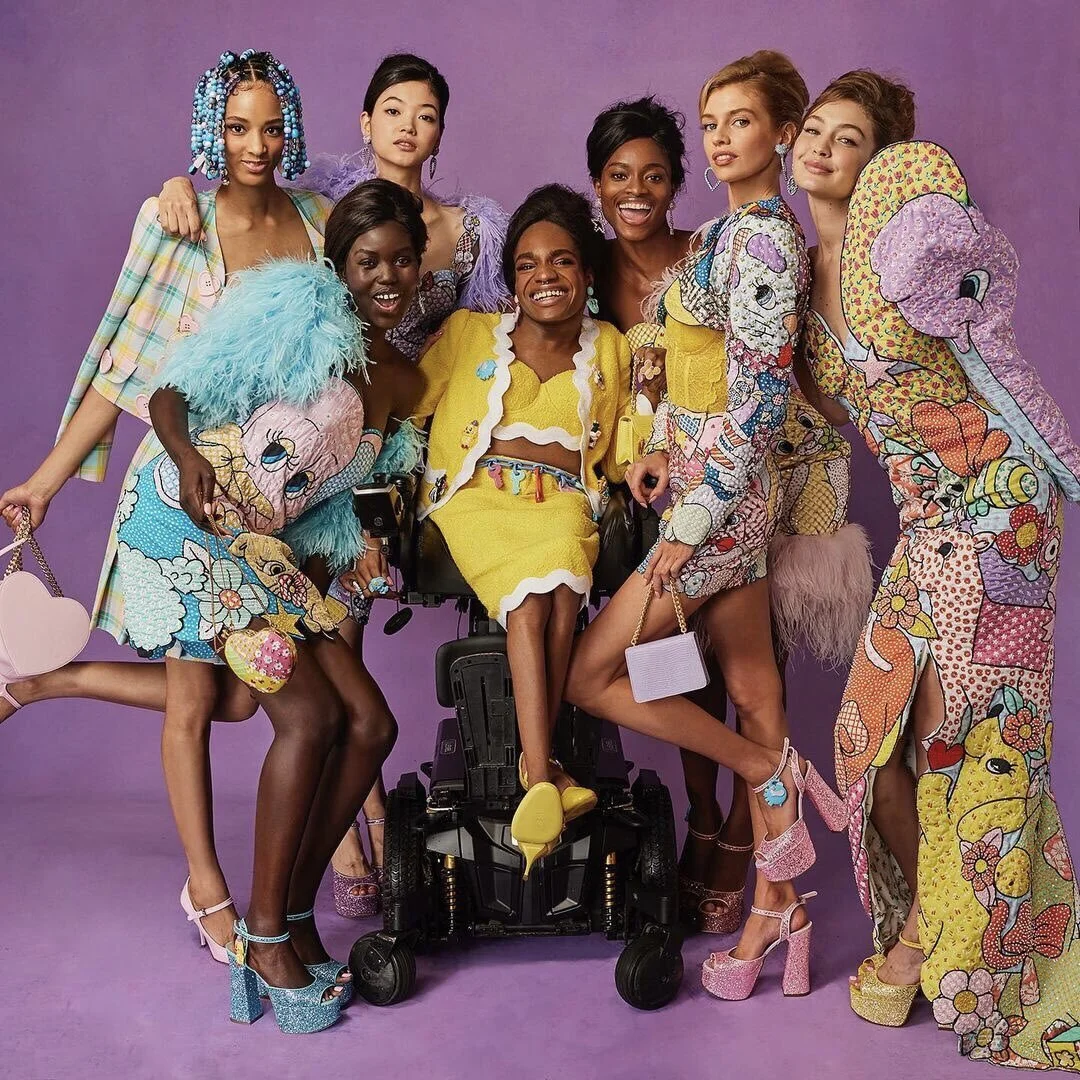"It’s been a long time coming": Disability Representation at New York Fashion Week and Beyond
Last week, Aaron Rose Philip made her trailblazing debut on the New York Fashion Week catwalk for Jeremy Scott’s Moschino SS22 presentation. Taking place in Manhattan’s iconic Bryant Park, the American model joined the likes of Gigi Hadid, Winnie Harlow and Precious Lee for the kitschy, tea-party-themed spectacle.
“It’s been a long time coming” Philip said in a powerful and emotive Instagram statement after the show. “I hope this is the start of more and inspires and empowers more global brands at the same level to truly work towards including and normalizing disabled presences and talents in their showcases. Disabled people, models and talents matter so much and we can do so much as long as the steps are taken to accommodate us properly.”
In July, the ‘Representation and inclusion in the fashion industry’ report (released by Fashion Roundtable in collaboration with the All-Party Parliamentary Group for Fashion and Textiles) exposed a hostile landscape of discrimination and marginalisation faced by disabled workers and consumers of the fashion industry. Our key findings in this area included:
People with disabilities are underrepresented in all sectors. Ableism was reported in the lack of training, and sense of tokenism when people with disabilities were employed (e.g. only being cast for special campaigns).
Negative attitudes to workers with disabilities must be addressed and eliminated. According to the disability charity Scope, 1 in 3 people see people with disabilities as being less productive than people without disabilities. There remain false assumptions about what people with disabilities can and cannot do. Changing attitudes towards workers with disabilities is also vital to mitigating potential bullying and harassment towards them.
The spending power of consumers with disabilities is valued at a staggering £274 billion, estimated to be rising by 14% per year, yet less than 10% of businesses have a targeted plan to access the disability market.
One evidence-giver said: “As a disabled woman, I have never seen myself represented. I regularly contact brands asking them to at least include a photo of their models sitting down, so I can see what clothes may look like on me and only about 5% of brands take that on board - this isn’t even asking them to actively include disabled people, just asking to see what an item of clothing would look like on a seated body before I spend money on those clothes. A fashion world where I am included is so far away, I cannot even imagine it.”
Another evidence-giver, a consumer, revealed: “Trying to get clothes to fit a child who is sitting in a wheelchair is tricky as her middle section is bigger (things are tight or gape). The changing rooms need more chairs and supports. We have to lie our child on the floor, this is even more difficult for an adult. Shoes that fit over splints are hard to find, we need shoes where the insoles can be removed, and the straps that go across the top (if Velcro) are longer. We don’t expect all clothes to be adaptive but they do need to consider that most people are not tall and skinny.”
A model agent raised an important point: “Many recognise the lack of visibility etc. and they want to see people who look like them. Parents want to see people like their children (who live with disabilities) represented and recognised in the media. It is vital for self-esteem. Being visible is a prerequisite for good mental health.”
Reasonable adjustments must be made to ensure job opportunities are accessible to disabled workers. For example, when disabled models are booked to work on a photoshoot, auditions should be held in accessible venues. There should also be an open dialogue about any further adaptations that will be needed to ensure the job is fully accessible and barriers are removed.


